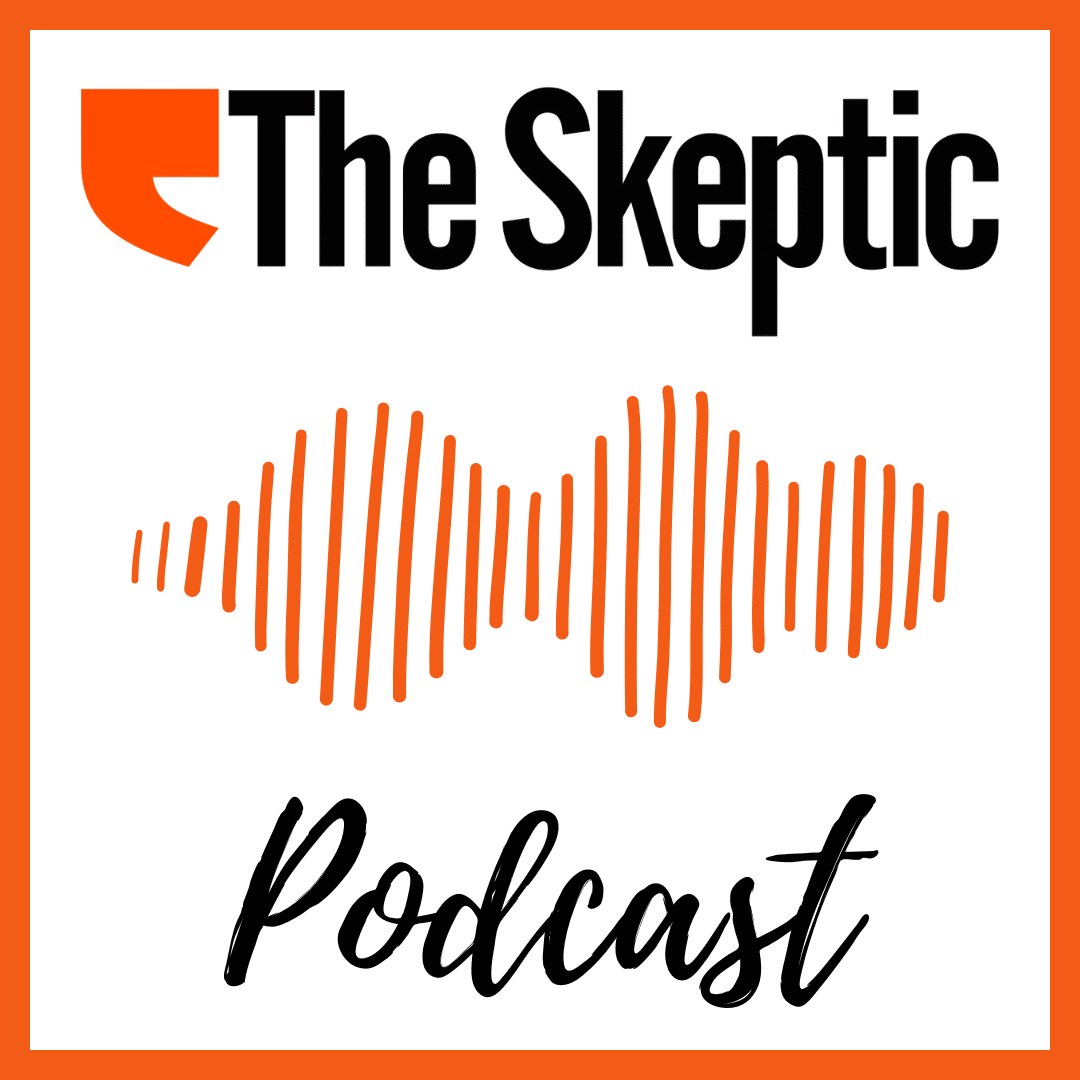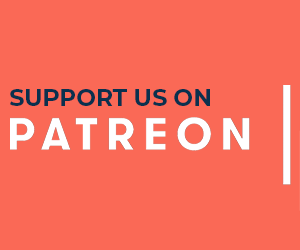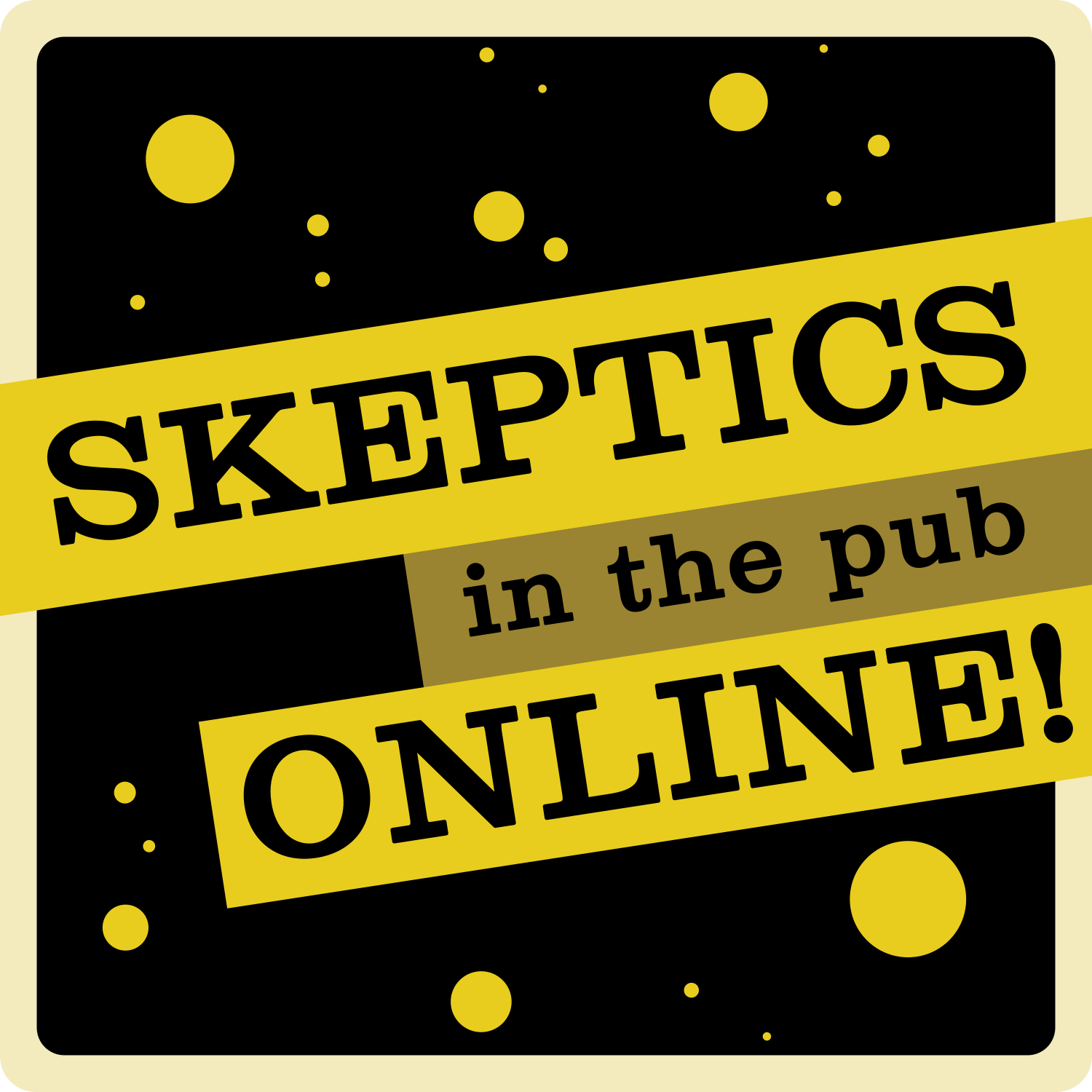I love to attend weird woo events. I went to see David Icke giving a four-hour lecture in Southport. I spent a weekend at the Flat Earth conference, and a different weekend at Lynne McTaggart’s Get Well conference. I’ve been to Gerson therapy lectures, Q Anon seminars, psychic shows, antivax rallies, 15-minute city protests, and countless Mind Body Spirit events.
I’ve been smeared in Neem by a man who claimed that covering himself in Neem cream was the reason he didn’t look 80 (when, in actuality, I think it’s just that he wasn’t 80). I’ve received a crystal reading at a former military base in the Midlands. I’ve watched my friend and fellow adventurer Dr Alice listen to ‘digitised DNA’, courtesy of a vet-turned-Sovereign Citizen.
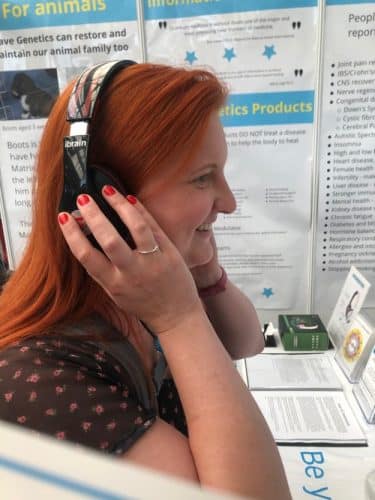
I was there when Sally Morgan asked an audience member if her deceased husband connected with the name Shell or Michelle, and she replied that he used to visit a Shell garage. I’ve sat through an extensive lecture from flat earther Martin Kenny about how the world and the entirety of history was based around a massive cosmic egg.
It’s been a wild ride.
People often ask me why I do it, and whether it’s worth it. After all, it costs time, and a little money – worse, that money goes to someone or something we actively disagree with. Personally, I do think it’s worth it. If you’re interested in skepticism, there’s really no substitute for seeing the opposite of skepticism up close. You can read the Wikipedia page on cold reading, or you can watch a room full of strangers crumble at the hands of a skilled cold reader.
You can hear skeptical talks about applied kinesiology, or you can see firsthand people get fooled by someone who is subtle about the physical forces they apply, to sell some worthless trinket or another. And you can read about the impact of inadequate healthcare and how it drives frustrated patients into the arms of quackery, or you can be in right there, where people entrust their health to the advice of the entirely unqualified.
It is an education for a skeptic to be in that room – not just to see what’s being sold, and what’s soon to be the next big thing we all care about, but also to see how it’s being sold, and to whom, and why they buy it. All that makes you a more informed and more effective skeptic.
That said, there are bad reasons to go. You shouldn’t go if your intention is to persuade people they’re wrong, or to shout at the people selling things, or to be disruptive or aggressive or condescending or any mix of the above. Partly, doing so reflects very badly on skeptics, which only makes the attendees more likely to distrust us and trust the people you’re shouting at. We become the bad guys, they become the underdogs and the put upon. It really can backfire. But also, if your goal there is to understand as much as possible and to see woo in the wild, you break that spell when you disrupt, and in doing so you also shatter your learning experience.
Chances are, you already know how those conversations go when there’s disagreement and antagonism, because we’ve all experienced that. For me, the purpose of attending is a learning exercise, not a teaching exercise.
So, let’s say you agree with me, and you decide to attend whatever event you happen to spot. What should you have in mind in doing so? Here are my top tips:
What to wear
It’s worth thinking about what to wear. Or, rather, it’s worth making sure you don’t overthink what to wear. Your goal is to be incognito and unobtrusive, so don’t try so hard to blend in that you end up wearing something that makes you seem uncomfortable, because then you’ll stand out. Wear your regular clothes, but maybe skip the t-shirts with slogans that ridicule religion or woos.
If you feel comfortable, you’ll act more comfortable, and nobody will pay attention to you. That said, if your regular wear is a full suit and a full-length leather jacket, maybe this kinda gig isn’t for you.
I would however suggest that you wear something with pockets, and you make sure you’ve got a bag. The pockets will allow you to keep your phone close enough to hand for whenever you might need it, and the bag will be very handy when it comes to flyers, leaflets, free samples, and anything you’re allowed to take without handing over more cash. My strategy is always to visit all of the stands, and to casually pick up any leaflets and flyers they’ve got lying around, because they’re a treasure trove of material and they’ll help you fill in the blanks from any conversations you might have.
Free samples are great for the same reason, they’re excellent collector’s items. That said, be careful in what you do with them when you get home – one ayurvedic face wash sampler accidentally made it from my office to my bathroom somehow, and the next thing I saw of it was my wife using it in the shower. It was fine, but it’s definitely worth keeping a hard wall between woo swag and everyday toiletries.
Recording and photography
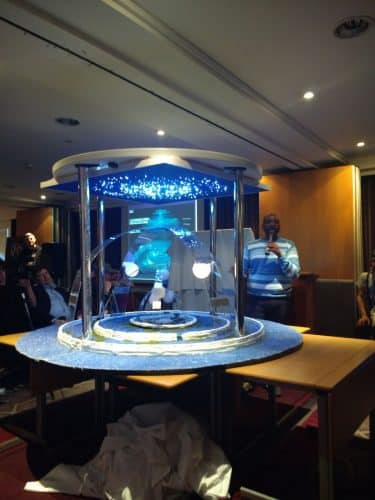
Nobody in 2025 bats an eye at someone holding their phone, or even at taking the odd photo of what’s going on, especially during talks and seminars. It’s a good idea to look around first, watch what other people are doing, and if there’s the odd picture being taken here and there, feel free to take that as a cue to lightly document things that seem of interest. Good courtesy would be to avoid taking photos of other attendees unless it is unavoidable (eg during a demonstration, or if they’re necessarily in shot when taking photos of something else).
It can also be a good idea to set a phone or tablet to record audio from before you set foot inside the event, and letting it run until you leave. Your intent is to record something only for your own records and note keeping, rather than for any form of broadcast. At a public event, even one that’s ticketed, there is no reasonable assumption of privacy on behalf of the speakers and presenters – especially when they’re there representing their business, either by selling services on a stall, or giving a public lectures and demonstrations. If you’re speaking at a ticketed public event, you can’t reasonably claim to be doing so in private. In which case recording for your own notes should be ok, but do check the rules in your own jurisdiction.
The backstory
In terms of backstory, the key again is not to over-prepare or overthink things. It is worth having to hand an answer about why you’re there, in case you get into a friendly conversation with anyone, because they might conversationally ask you something about yourself and what brought you there. I tend to go with something like “I’ve always been interested in learning more, but haven’t really had the chance to do much of that yet”, because that puts you there for all the right reasons, but with no expectation that you’ll be an expert; it even helps explain if you seem awkward or unsure about how it all works. If anything, it’s an invitation for them to tell you more, which is exactly your goal.
Equally, you can also reflect that question back to them – do they come to these things often? What brings them along? What are they interested in? Open, friendly questions invite people to tell you more, and your job is to listen and to understand.
If you’re attending an alternative health-related event, it can be useful to have a health reason in mind. Again, don’t overthink it – you don’t want to be memorising medical notes about the exact diagnosis you’ve given yourself, the test results and the specific symptoms; this isn’t a creative writing exercise. Instead, you could refer to an illness you actually have, if you have something (thank you, my chronic allergies). Or, you could have in mind an illness you know very well – perhaps something you’ve experienced through a close family member, whose symptoms you have good recollection of. Asking what a relevant CAM practitioner at the event thinks of their symptoms can be a good way to understand to what degree they understand the limits of their therapy.
Time to head in
What do do once you’re there will depend on the type of event. It could be a conference model, in which case it’s mostly about sitting and listening to the talks. Your interaction with other attendees will be limited to breaks, so try to take the opportunity to spark up a conversation. People will often be very keen to talk, not least because lots of people attend on their own, being the only person they know who really believes in whatever conspiracy or esoteric idea is the theme of the day. A good opener is something like, “That was pretty interesting, what did you make of it?” or “Have you seen the speaker speak before?”. After that, asking open questions will invite them to tell you more, and I typically occupy a position where I am interested but don’t know too much about it specifically, but I’m really keen to learn more, because usually people are very willing to inform me.
Other events aren’t about speakers, but instead are a collection of stalls and booths. These are great, because they’re like a little samples of nonsense – woo tapas. This is where your bag will come in handy; pick up anything that’s free to take, from flyers to leaflets to free samples.
I try to adopt a friendly, curious expression, and approach with a quiet demeanour, just trying to understand what the booth is and what it’s all about. You might find the vendor engages you in conversation – you’re curious, but that’s OK, they’ll be eager to tell you. They’ve paid for that booth, and they’ll want to make it worthwhile.
You’ll get their practised sales patter, and it’s good to ask follow-up questions here, but try to keep them at the level of “what might be the obvious thing to occur to me here” or “what might be a common-sense question”. I try to avoid questions like, “How do you sleep at night?”. Ask how things work, if they’re proven, and how we know they’re proven. See what they say. If it’s a health claim, ask why more people don’t know about it, and why doctors don’t use it. Those gentle probing questions can get you quite far.
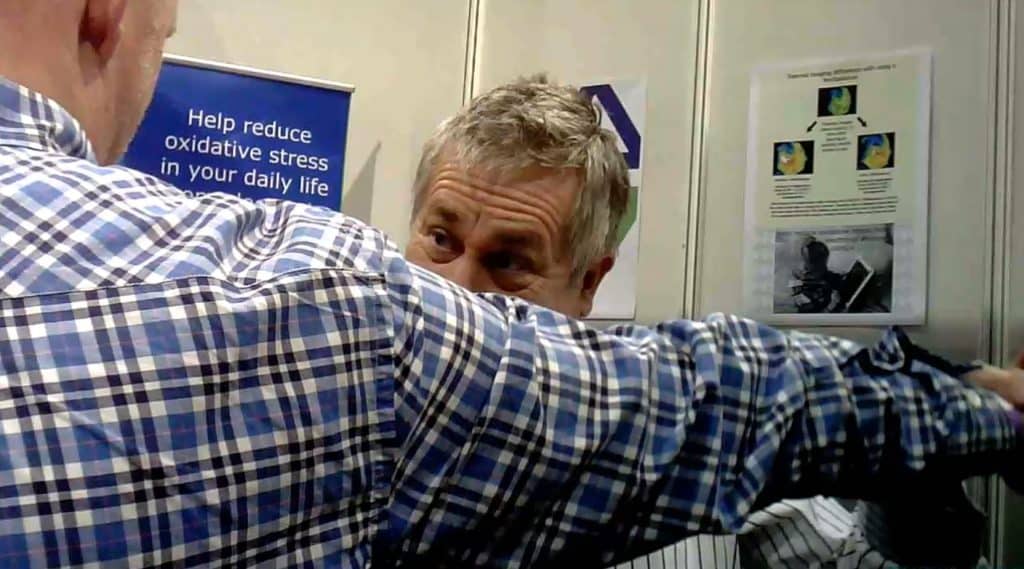
Don’t get into an argument, not least because that’ll blow your cover before you get to the next table. They might try to press a sale on you, but you can always hit the ejector seat by saying something like, “That’s really interesting, thanks so much. I’ve so much more to see but I might be back around later.” It’s OK, you don’t actually have to come back.
When it comes to events that will be a mix of talks and booths, get a brochure as early as you can and check out which talks and demonstrations stand out to you. Cast a wide net, because titles can be misleading and you don’t want to miss out on something incredibly weird just because the speaker didn’t know how to market themselves. Typically, you’re not forced to sit through a whole talk if you’re not interested, so try to find a seat towards the back of the room or near to the exit, in case it doesn’t grab you as weird enough and you want to skip out to peruse the vendors’ booths.
Free samples and taster sessions
At these booths, there may be the opportunity to take a free sample of something, or to have a free taster session of a therapy. Always accept the free sample, though if that free sample is food or drink you must have right there on the spot, exercise some caution. If it’s a foodstuff prepared with an unusual ingredient, it’s probably not going to harm you, it might just be unpleasant tasting (but that’s fine – it’s the experience, in some ways that’s ideal!). But, when it comes to shot glasses of mysterious green liquid from Ayurvedic stalls, perhaps politely decline since some tinctures are tainted with things like heavy metals and it isn’t worth the risk.
Taster sessions of therapies is a different matter. Personally, I’ll try any that are free – think of the stories you can tell afterwards. You want to be able to tell people about the time you listened to digitised DNA, or had to wear a pyramid hat to channel your energies, or were given a 10-minute computer scan to tell you which of 12,000 foodstuffs you’re intolerant of, and to what degree.
After the event
It can be quite energy intensive to attend an event like this, and if it all goes well (ie you’ve encountered something fascinating or shocking) it can leave you a little drained. especially if you’ve had to keep up a friendly, open, non-judgemental demeanour throughout. Make sure you’re far enough from the event and its audience before you drop the poker face – it can be very awkward to step out of the venue and immediately vent about the experience… only to realise someone from the audience happened to walk out close behind you. Especially if you’re planning to go back after lunch, or the next day.
Once you’ve attended and had this weird experience, the obvious question is… what now? What do you do with it? It’s useful to reflect on your experience and think about whether it might change how you talk to people about these subjects in future. Obviously, you’re going to share the most fun or shocking or silly or dangerous stories with your friends; those are the spoils of war, the reward for the effort.
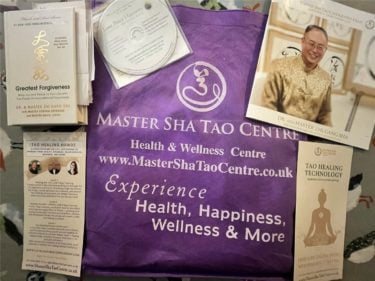
You should then return to that bag of flyers and leaflets, and think about what you were told – how much of it was harmful? What was most concerning? Is there anything in the leaflets that adds to that or evidences it? Some of the leaflets will include claims that violate regulations – advertising standards, consumer protection, MHRA, FDA, FTC, etc. Often, making a complaint to the relevant authority can be as simple as filling in an online form and attaching an image of the flyer.
Finally, if you have a really interesting experience, or see something really worth talking about – get in touch, and we’ll be happy to cover it in The Skeptic. We’re always looking for new writers: [email protected]. You don’t have to be an experienced writer, we can help you put your thoughts together.

